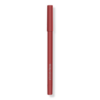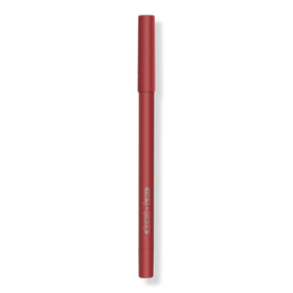
Mintel’s research shows that nearly three-quarters of US respondents (74%) agree that affordable makeup can work just as well as premium products, a trend that is underscored by the growing number of social media posts highlighting how less expensive makeup brands can do just as good a job as some top of the range brands.
Backing this up, the research also shows that around one third of consumers in the 18 to 34 age group say they have purchased a ‘dupe’ because of favorable content supporting less expensive brands on social media.
Dupe culture driven by lower spending power
“Persistently low consumer confidence continues to drive cost-conscious shopping behaviors, including the popularity of dupes, with social media playing a big role. This is especially true among younger consumer groups, which are more likely to be influenced by and take inspiration from social media,” said Joan Li, Senior Beauty & Personal Care Analyst at Mintel.
“While the ‘lipstick effect’- in which color cosmetics are viewed as an affordable luxury during times of financial uncertainty – protected the category from high inflation’s threat to discretionary spending, looking ahead, the color cosmetics market is expected to level off. Our research forecasts that growth will slow due to headwinds from continued trade-down behaviors, the mainstay of work-from-home and hybrid lifestyles, and competing growth in beauty-adjacent categories like ingestibles and skincare.”
This is also underlined by Mintel data that points to less makeup use, with the survey results showing 35% say they are using less makeup compared to a year ago, while only 25% say they are using more makeup.
Value is the driving factor
But Mintel’s data also reveals that perceptions of value in the makeup category are nuanced, with 41% of the respondents stating that they prefer to buy premium products, regardless of price.
All of this is playing out to a backdrop of a category that is seeing strong growth in terms of value, but not in volumes. In 2023 the US color cosmetics category is expected to grow by 10%, a figure that is muted once inflation is taken into account. Over the next five years that growth rate is expected to be significantly reduced, rising by just 9% over the period.
Indeed, Li believes that in the current climate, where the cost of living crisis is impacting the spending power of many consumers, one of the biggest factors in purchasing decisions is now budget.
Male makeup use is still on the rise
Despite the challenges that the category faces, male makeup users appear to be reversing the overall trend in the category. Mintel’s survey data shows that 43% of male users are applying makeup, with two in five saying they do so to relieve stress or to relax.
“Our research shows that men’s appearance concerns are focused on complexion and blemishes, which leads them to prefer facial cosmetics over other segments,” said Li.
“Makeup’s emotional and mental draw for men suggests that when reaching this audience, brands should balance external benefits, such as appearance, with internal benefits, such as self-care. Brands in this space could also find success by highlighting the soothing sensation of makeup application, particularly with facial products, as men are most likely to gravitate toward that subcategory,”
Emphasis on younger skin-conscious consumers
While US consumers are reporting fewer occasions to wear makeup, younger consumers are also pointing towards skin concerns as a reason to wear less makeup, with 42% of women aged 18-34 citing skin health concerns as a reason to wear less.
“Given that there were fewer out-of-home occasions to inspire color cosmetics use, 18-34-year-old Americans may continue the habit of using makeup on an every-other-day or weekly basis, demonstrating a ‘flexitarian’ approach that is perceived to be more convenient and healthier for the skin,” said Li.
“As the health and wellness industry expands to include emotional well-being and skin health, consumers will increasingly challenge beauty brands to clearly communicate the roles brands play within the evolving industry,”
This post was originally published on this site be sure to check out more of their content.








